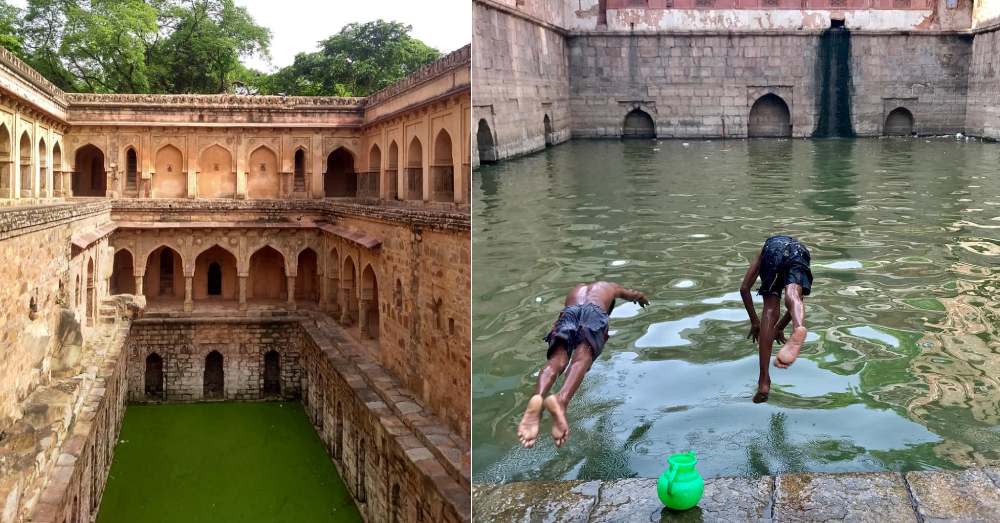
.jpg)

The Gandhak ki Baoli is a much more significant step well than the Anangtal Baoli. It has decorative architectural features. As the name Gandhak implies, the water in the stepwell has sulfur content and hence smells of sulfur fumes, and the water is said to have curative quality. It has a simple plan with five stages or floors at each stage, in a taper down fashion, with steps leading to the water surface at the lowest level.[1][2] The stairway here is about 40 meters (130 ft) long and 12 meters (39 ft) wide.[3] On each floor, there are ornate pillared passages. Over the centuries, the stepwell got silted up, and recently, ASI imitated action to do desilting. The desilting operations carried out by ASI in 2004–05 have resulted in the water's recovery in the well to a depth of 40 feet. Today, the monument lies in a dilapidated state, in dire need of conservation and public awareness. The stepwell may not serve its original function, but water collects in the lower levels during the monsoons. Debris lies in the topmost section of the steps, making it difficult for any tourist to access. The water is also filthy, and the moss makes the stones slippery. It's about time that the authorities look into clearing out all the rubble, trim the vegetation, and place railings along the ledges at intermediate levels, making it safer for tourists to visit this place. Located at one edge of the vast Mehrauli Archaeological Park, this monument is a trailer to the ruins of a settlement developed in the 16th and 17th centuries.